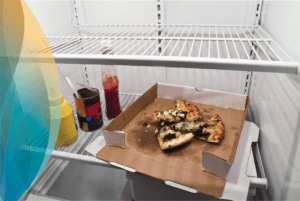Why Healthy Food Matters
Household food insecurity is not having enough food due to lack of money.
People in food insecure households have:
- Poorer mental, oral and physical health
- More stress and anxiety
- Greater chances of having diabetes, high blood pressure and heart disease
- More chance of being a high-cost user of health care
Who is most at risk?
- Households with children under 18 led by a female lone parent
- Households relying on social assistance
- Indigenous households
- People who rent
Why does the cost of food matter?
When money is tight, people are forced to cut into their food budget to pay for other living expenses. They skip meals, eat fewer vegetables and fruit, drink less milk, and fill up on non-nutritious foods because they are cheap. The result of this unhealthy diet is an increased risk of illness, and poor growth and development in children.
Why can’t people afford healthy food?
As the cost of living increases, incomes are not keeping up. Despite increases
Since 2016, the cost of feeding a family of four has increased in both First Nations and non-First Nations communities. According to the 2017 Nutritious Food Basket Survey results, a family of four, with two adults receiving social assistance would need to spend about 38% of their take-home income on healthy food. It costs 73% more to feed a family of four in a remote First Nations community.
(Source: Northern Food Basket Survey Report – 2015, NWHU Nutritious Food Basket Survey Results – 2017)
Want to Know More?
Food Security in Northwestern Ontario
In northwestern Ontario, there are:

- 3,900 people who are food insecure (CCHS 2013/14)
- 7.6% of households where one or more people did not have enough food to eat because of lack of money in the past 12 months
- 14.3% of households where one or more people either did not have enough to eat, the quality or variety of food to eat that they want, or worried there might not be enough to eat because of lack of money in the past 12 months
(Source: RRFSS, 2018)
What Can You Do?
There is a false idea that people in poverty receive enough food from food banks. Food banks were intended to be emergency relief in the face of a recession and have since been institutionalized. They are not a valid long-term solution and they do not address the underlying cause of food insecurity which is poverty.
There are steps you can take to influence the health of your entire community and make food security a priority:
- Learn more about addressing the causes of food insecurity, poverty and Guaranteed Annual Income
- Speak out. As a citizen you can help increase awareness about the need for long-term solutions to food insecurity and poverty by sharing information with friends, family, neighbors and co-workers
- Use your skills. Become part of a local committee or group focused on reducing poverty and food insecurity, or write a letter to your local Member of Parliament
- Avoid spreading the message that charity or community food programs are effective responses to food insecurity
- Focus on ‘upstream’ or systems efforts when possible
- Check out the Cent$less campaign (promoting the need for income solutions for food insecurity)
Helpful Links
- No Money for Food is…Cent$less
- NWHU Cost of Eating in NWO Infographic
- ODPH Position Statement and Recommendations on Responses to Food Insecurity
- ODPH Position Statement and Recommendations on Responses to Food Insecurity: Executive Summary
- ODPH Food Insecurity Infographic
- http://decentworkandhealth.org/
- Unnatural Causes – Food Insecurity
- NCCDH Advocacy for Health Equity – Food Security